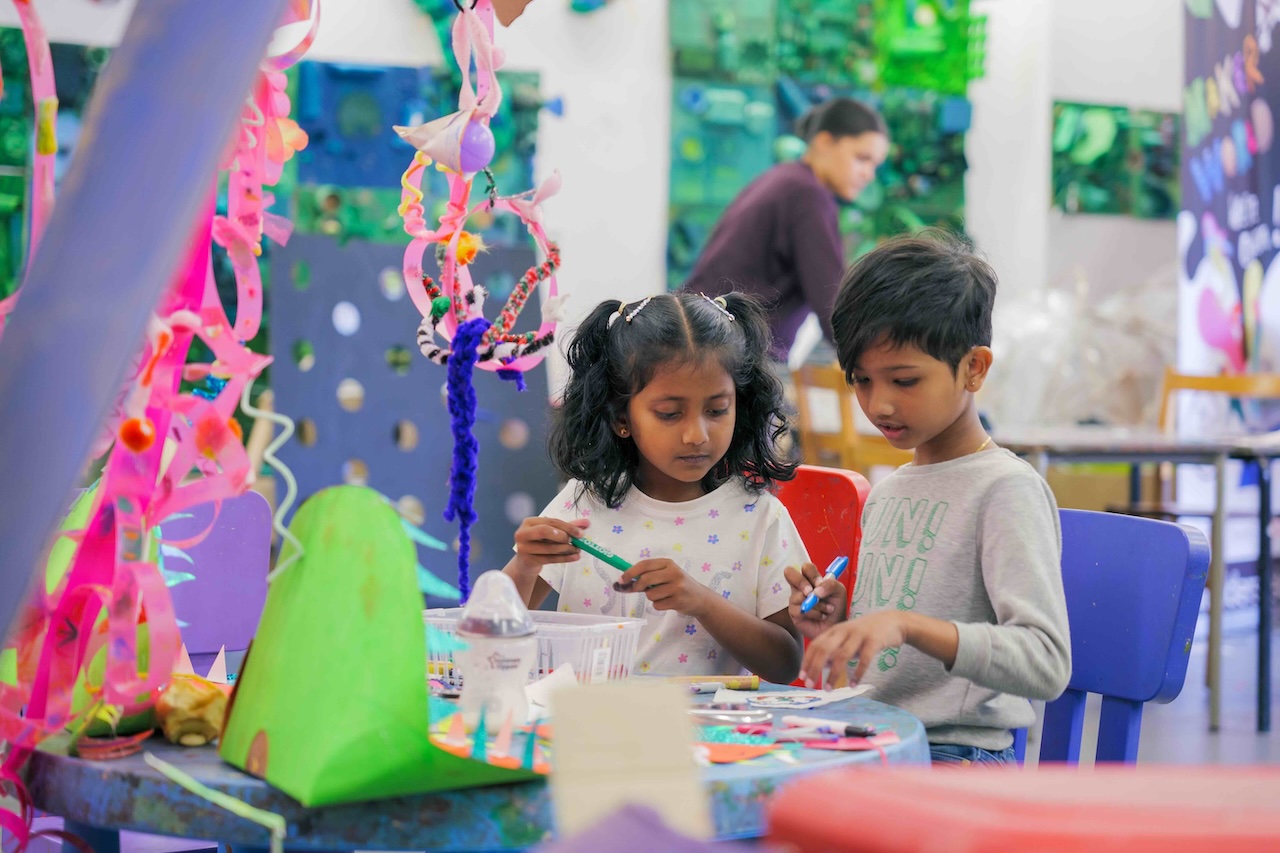Chloe Williams, founder of The Children’s Art School and MakerWorld on the importance of culture in the future of town centres
As the founder of The Children’s Art School, Chloe Williams has had the privilege of witnessing first-hand the transformative power of culture in Huddersfield town centre. Through initiatives like MakerWorld and the Creative Piazza, she’s worked to allow art and creativity to breathe new life into urban spaces, creating vibrant communities and fostering a sense of belonging among residents of all ages.
Q: You have mentioned that Huddersfield’s cultural heart is already alive. Can you give us some examples of how this manifests in the community?
A: When we talk about creating a cultural heart for Huddersfield, it’s important to recognise that it’s already here, pulsing with life and creativity. MakerWorld, just one of the organisations in the Creative Piazza, exemplifies this vibrant cultural ecosystem.
It’s the three-year-old painting a pirate ship with a MakerWorld artist on a Friday with morning, whilst singing pirate songs with Ben a facilitator from Musica.
It’s the eight-year-old who has been to almost every Saturday makerWorld sessions since he was four
It’s the 25-year-old who packs out venues when playing with his band but also leads the whole room in MakerWorld – children and parents alike – in singing the soon-to-be original hit single ‘MakerWorld Mambo’.
It’s the mum who told us that during the summer of 2022, when she had just had her fifth baby and they came to every session, that it was ‘life-changing’ for her children.
It’s the 10-year-old boy who said he didn’t think he was good at art but now realises anyone can be an artist.
It’s the family who said “It’s such a relief that it’s free” when the cost of living crisis really started to hit.
It’s the neurodivergent child who is struggling in the school environment but is first through the door at MakerWorld sessions.
It’s the father finding that creative joint endeavour strengthens the bonds he has with his daughters and supports him and them to cope with difficult times.
Q: Can you share some data on the impact of MakerWorld’s cultural engagement in Huddersfield?
A: Our success isn’t just anecdotal. Our impact data shows that MakerWorld has become a vital part of many families’ lives, with 75% of visitors coming specifically for our activities. We’ve attracted funding to support our programmes for five years, demonstrating the long-term potential of cultural initiatives in town centre regeneration and the recognised potential. Two thirds of our visitors don’t usually do creative activities and 40% of our visitors are non-white. This is culture creating community cohesion.
Q: Based on your experience, what are the key ingredients for successful cultural regeneration?
A: Our experience has taught us several key lessons about what makes cultural regeneration work:
Visibility and accessibility: A high-street location has been crucial to our success, making culture visible and accessible to all.
Flexibility and responsiveness: We’ve adapted our offerings based on community feedback, allowing our programmes to evolve organically.
Collaboration: Partnerships with other cultural organisations have expanded our reach and enriched our offerings.
Space: Having a dedicated space has been absolutely crucial. It’s allowed us to secure funding and develop new initiatives.
Community engagement: We’ve built a community of participants, artists, and cultural leaders who are invested in the town’s future.
Q: What is your vision for the future of Huddersfield’s cultural heart?
A: As Huddersfield develops its cultural heart, it’s essential that we build on the successes we’ve already achieved. We need to ensure that the new cultural spaces being developed are truly for the community that’s already here – the participants, artists and cultural leaders who are already facilitating cultural engagement. These spaces need to be flexible and ever-evolving.
Our vision for Huddersfield’s future includes:
A broad cultural offer for children, young people, and families as an integral part of the town centre, not just an add-on.
Visible, accessible spaces for creativity, from music rehearsals to skateboarding, art workshops to film schools.
Collaborations with national arts organisations, bringing world-class culture to our doorstep.
Regular large-scale community art projects that transform public spaces and bring people together.
Q: What are the key challenges you foresee in achieving this vision?
A: To achieve this vision, we need to address several challenges:
Funding: While we’ve secured funding for the next few years, long-term sustainability remains a concern. We need to view investment in cultural programmes as an investment in the community and future generations.
Space: As development plans progress, it’s crucial that we maintain accessible, visible spaces for cultural activities in the town centre.
Bureaucracy: We need to build trust with gatekeepers and decision-makers, demonstrating the value of creative risk-taking in public spaces.
Q: What do you believe is the next step for Huddersfield’s cultural development?
A: Huddersfield already has the creativity it needs to transform its town centre. What we need now is recognition and nurturing of this existing cultural ecosystem. As we move forward with the Cultural Heart development, it’s crucial that cultural leaders and community members are brought to the table.
I really want to see a future where Huddersfield’s town centre is alive with creativity every day of the week – where you can see art being made, hear music being played, and feel the energy of a community engaged in culture. This isn’t just a dream; it’s a reality we’ve already begun to create. Now, we need the support and vision to take it to the next level. The creativity we need is right here. Let’s work together to make our town centre a true cultural heart that beats for everyone.

